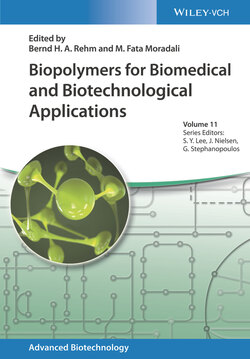Читать книгу Biopolymers for Biomedical and Biotechnological Applications - Группа авторов - Страница 54
2.7.3.4 Other Applications
ОглавлениеChitosan and CGC are used as a component of some cosmetic products such as hand and body creams, hair care products, or toothpaste. For example, chitosan protects hair from mechanical damage and exhibits an anti‐electrostatic effect on hair. Other chitosan benefits on cosmetic formulations include the water resistance and sun irradiation protection of chitosan emulsions, activation of fibroblasts, collagen deposition improvement, antiseptic properties, and skin protection from microbial infections [207,235]. Similar to chitosan, A. niger CGC is also already used as a natural scaffold for skin moisturization and rejuvenation [247,248].
In textile industry, chitin fibers are also used despite their low tensile strength. In this way, chitin is usually used as a coating material for cellulosic, nylons, cotton, and wool fibers. The use of these modified fibers includes the production of wound dressings, medical textiles, sanitary absorbents, underwear, and waterproof textiles [207].
Chitinous polysaccharides are antimicrobial and have metal ion absorption capacity, features that make these biomaterials also valuable to agricultural products. These polysaccharides are considered valuable alternatives to synthetic chemical agents (bactericides), due to their antibacterial activity. There are several reports showing the role of chitinous polysaccharides in some fruit and vegetable resistance against fungal infections [207,217,224] (Table 2.4). Moreover, it was also reported that chitin can retain nutrients in the soil [234]. Another application of chitinous polysaccharides in agriculture is as a metal and mineral absorbent for the clarification of wines [253].
The metal absorption capacity of chitinous polysaccharides also enables their use in wastewater treatment and bioremediation. For example, chitosan and CGC have the ability to remove copper, nickel, zinc, or cobalt ions from wastewater [241,254].
